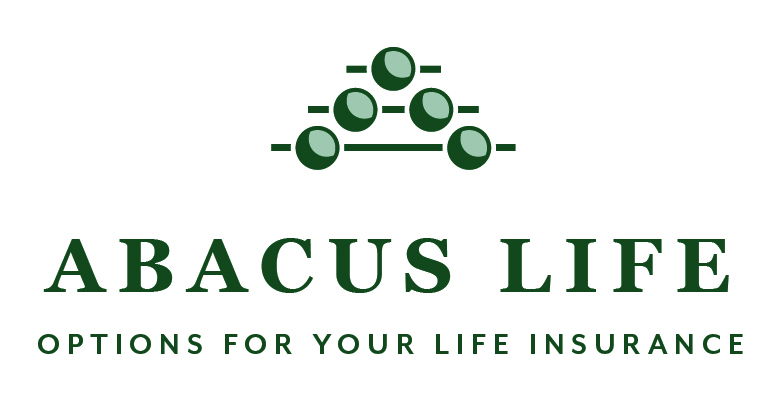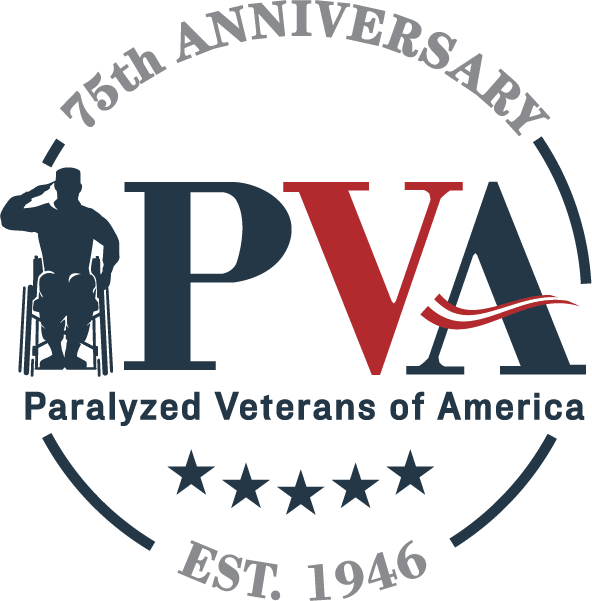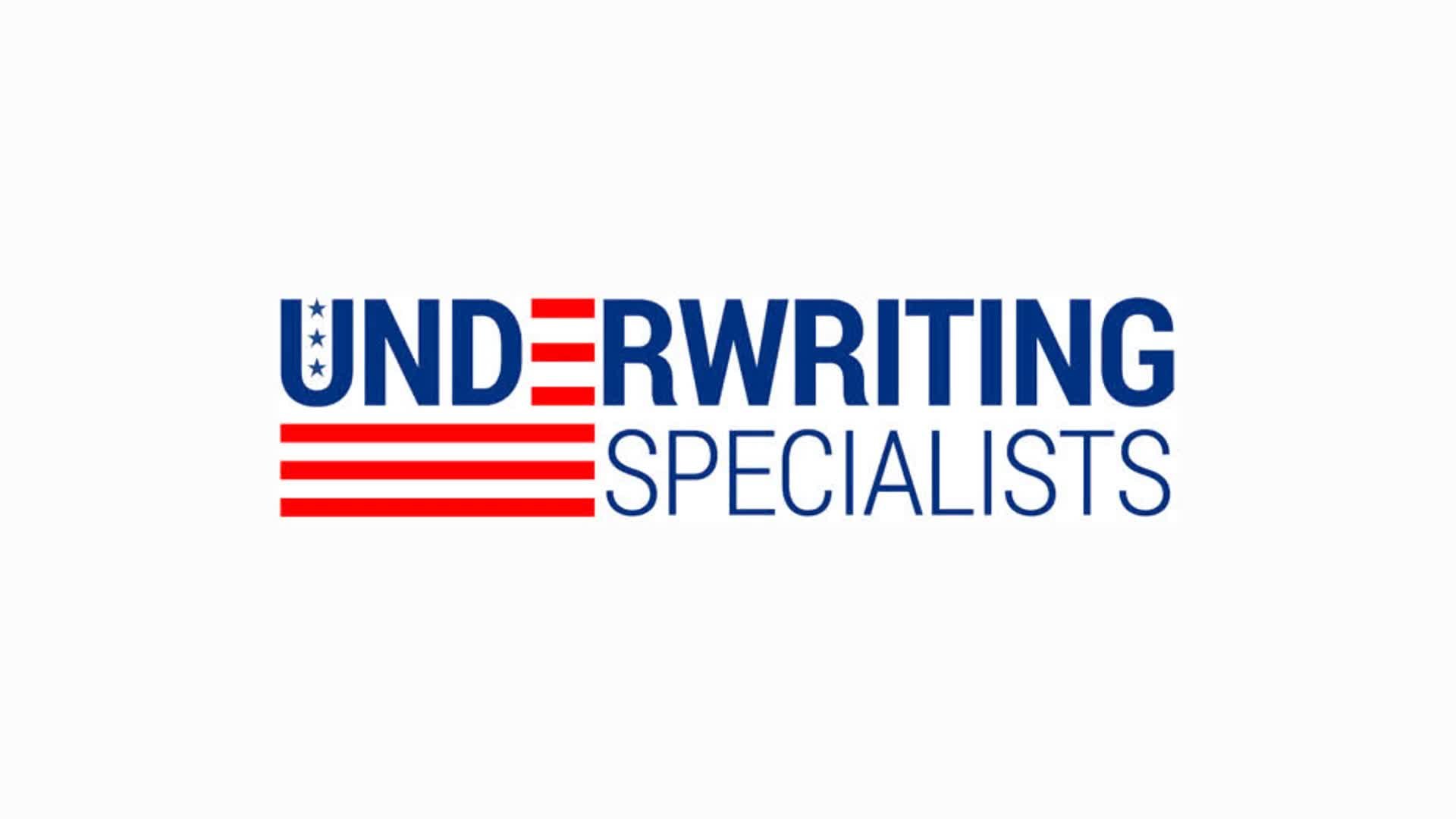'Where Independents
Go for Independence'
We Provide the Solutions & Service,
You Enjoy the Success.
AGENTS & ADVISORS:
Join an IMO with over 40 years of service.
At USI, we realize the challenges that independent agents and advisors face on a daily basis. With USI's decades of experience comes superior product knowledge, carrier relationships and unique sales concepts for you to meet the needs of your clients and effectively build your practice. Work with an Independent Marketing Organization that works for you!
ABOUT USI


At Underwriting Specialists, Inc. (USI), our agency has worked alongside countless independent insurance agents and financial advisors for over four decades. Founded in 1975, our mission has been to provide valuable guidance for producers as well as practical products and sound solutions to support their clients' needs.
With our decades of expertise, producers can rest assured that they have a quality team behind them. As an active producer with Underwriting Specialists, you'll enjoy several advantages of developing a productive relationship with our team. From our unparalleled industry experience to in-depth product knowledge and marketing support, our team is poised to support your success.
Exceptional Service
Our team is ready to get to work! We are committed and strive to deliver the best service for our producers each and every day. From facilitating the licensing process for producers, to initiating product quotes and illustrations for clients, and supporting producers throughout the client sale process, our team is prepared to service the various case requirements of our hard-working agents.
Extensive Portfolio of Products at Your Fingertips
We realize every client is a bit different and may require alternative product solutions to fit their individual circumstances. At USI, we work closely with our producers to understand their client's requirements and identify the proper product solutions to meet their needs. From a standard term policy to a more complicated requirement, we invite our producers to inquire with us, so that we can provide direction to the best available product options.
USI's Strategic Affiliations
In addition to USI's experienced team of insurance industry professionals, we also develop and maintain key strategic partnerships with top-notch organizations whose expertise enables Underwriting Specialists to expand and deliver even more product solutions.
USI TEAM
BOARD OF ADVISORS
| Ellis Management Ellis Family Business Partners | Gary Tannenbaum, Esq. The Tannenbaum Group |
Thomas Holt, President Holt & Associates | David Vento, President Infinity Consultants |
CARRIERS
PARTNERSHIPS
STRATEGIC AFFILIATIONS
 |   |  |
MARKETING, SALES & TECHNOLOGY
 |  |
 |
 |  |
PHILANTHROPY
At USI, we are proud to support numerous local and national charitable organizations. Part of USI's mission is to give back to those families and individuals throughout the communities we serve.
 |  |  |
 |  |  |
 |  | |
PRINCIPLES OF ETHICAL MARKET CONDUCT
Agents and Brokers principles of ethical market conduct Each insurance agent and broker subscribing to these principles commits themselves in all matters affecting the sale of individually sold life and annuity products:
- I will conduct business according to high standards of honesty and fairness and render that my service to my clients which, in the same circumstances, I would apply to or demand for myself.
- I will provide competent and customer-focused sales and service and will maintain a level of professional competence through a lifetime commitment to professional growth and continuing education.
- I acknowledge the different constituents whom I serve: insurance companies and the wider insurance industry, my clients, my client’s advisors, my community, and my family - and I will ethically resolve any conflicts that might arise between those relationships.
- I will communicate fully and effectively so that clients receive appropriate recommendations that balance the natural inclination to maximize benefits, tempered by their unique tolerance - or lack of tolerance - for risk.
- I will deliver to my client a statement of business processes, methods of compensation, and other disclosures appropriate to an open and professional business relationship.
LIFE INSURANCE
TERM LIFE INSURANCE
Term life insurance often provides the lowest cost of life insurance coverage which is why it is most popular with the general public. Premiums remain guaranteed for a level period of time for a stated death benefit. The policyholder often has options to either renew coverage or convert the policy to -permanent coverage. In addition, business owners in a partnership often have a Buy-Sell Agreement in place to provide protection for the surviving partner(s) in the event that one of the partners dies. Typically, a Buy-Sell Agreement is funded through a Term Life Insurance policy.
ENHANCED BENEFIT TERM
Term Life with Accelerated Benefits allows the policy owner to access all or part of their death benefit while living if they experience a qualifying terminal, chronic, or critical illness. Since these benefits are generally unrestricted, once qualified, the policy owner can use the benefit for any reason.
INDEXED UNIVERSAL LIFE
Indexed universal life (IUL) insurance allows the owner to allocate cash value amounts to either a fixed account or an equity index account. Policies offer a variety of well-known indexes, such as the Nasdaq-100 or the S&P 500.1 IUL insurance policies are more volatile than fixed ULs, but they are less risky than variable UL insurance policies, because no money is actually invested in equity positions. IUL insurance policies offer tax-deferred cash accumulation for retirement while maintaining a death benefit. People who need permanent life insurance protection but wish to take advantage of possible cash accumulation via an equity index might use IULs as key person insurance for business owners, premium financing plans, or estate-planning vehicles.
GUARANTEED UNIVERSAL LIFE
Guaranteed Universal Life insurance takes the concept of universal life insurance but removes the market risk aspect of it. Your premiums stay the same regardless of how market indexes perform as your plan’s interest rates are baked into the premiums when you sign up for the policy. This type of life insurance has a “no-lapse” guarantee, meaning that as long as you pay your premiums, you’ll have coverage.
SURVIVORSHIP LIFE INSURANCE
Survivorship coverage is best applied when used for protecting the financial health of future generations. Usually, a survivorship life insurance policy is used to pay estate taxes, inheritance taxes, and to cover the financial needs of policyholders’ children or dependents
WHOLE LIFE INSURANCE
Whole life insurance provides coverage for the life of the insured. In addition to paying a death benefit, whole life insurance also contains a savings component in which cash value may accumulate. These policies are also known as “permanent” or “traditional” life insurance. “Blue Chip” investment grade whole life plans can provide significant cash accumulation benefits and stable and secure cash growth.
FINAL EXPENSE INSURANCE
Final Expense is a “catch phrase” to describe low face permanent life plans; normally whole life or guaranteed universal life. Many “Final Expense” plans can be acquired with minimal underwriting requirements, making them attractive to seniors as well as the writing agent.
LINKED BENEFIT LIFE INSURANCE
This is life insurance coupled with long-term care combination products (often called hybrid or asset-based products) which fall into two main categories: linked-benefit products under and accelerated death-benefit riders. Benefits under 7702(b) are closer to true long-term care benefits and can be marketed as such, while accelerated death-benefit or chronic illness riders under 101(g) cannot be marketed as long-term care insurance, even though the benefits can be used for long-term care expenses.
GROUP LIFE INSURANCE
Group life insurance is offered by an employer or another large-scale entity, such as an association or labor organization, to its workers or members. It is fairly inexpensive, may even be free, and is pretty common nationwide. It has a relatively low coverage amount and is typically offered as a piece of a larger employer or membership benefit package.
BANK LOAN INSURANCE
This unique insurance protection was designed to indemnify a lender for the balance of money at risk given a contractual business loan agreement. A premature death or disablement of the borrower will usually trigger an immediate call on the loan. The protection of other business assets becomes even more essential during this type of situation.
ANNUITIES
FIXED INDEXED ANNUITIES (FIA)
Fixed Index Annuities, also known as equity-indexed annuities base their annual interest rates on the performance of certain pre-determined indexes, such as the S&P 500. It’s a way to balance the risks and rewards, carrying lower risks than market investments and higher potential than traditional fixed annuities. The interest rate won’t sink below a preset amount. Any gains earned will be locked in and it will never lose its value. These annuities often have enhanced income riders attached which will pay a lifetime income based on values significantly higher than the invested amount.
SINGLE PREMIUM IMMEDIATE ANNUITIES (SPIA)
(SPIA) Single Premium Immediate Annuities: With a Single Premium Immediate Annuity (SPIA) the annuity holder begins receiving payments within a year after purchasing it. The payments can be for a fixed period of time, or for the lifetime of the annuitant.
MULTI-YEAR GUARANTEED ANNUITIES (MYGA)
This is the option with the least risk and the most predictability. Multi-Year Guaranteed Annuity (MYGA) sometimes referred to as fixed annuities, come with a guaranteed, set interest rate for a fixed number of years, that doesn’t vary beyond the terms of the contract. While other investments might soar or dive, the fixed annuity is steady. At the end of the predetermined number of years, the interest will reset, often at a lower rate.
ENHANCED INCOME FIXED INDEX ANNUITIES
Fixed Index Annuities that have a low-cost rider, typically under 1% that will provide enhanced lifetime income. In many cases the enhanced value is twice to accumulated value of the annuity. The income provided will not run out no matter value of the underlying annuity. The income rider can be single or joint and works with qualified and non-qualified accounts.
ACCUMULATION FOCUSED ANNUITIES
Accumulation Focused Annuities: These are fixed index annuities with a low cost rider that is designed to boost the indexes and fixed accounts for the annuity. By doing this it increases the growth potential of the annuity at a rate that exceeds the cost of the rider.
BONUS ANNUITIES
Bonus Annuity: These are Fixed Index Annuities that have a 'Bonus' on the premium. In the case of a single premium annuity the bonus is on that first premium. With a flexible premium annuity the bonus is added all new premium placed within a set period of years, which are typically within the first 5 or 6 years. These annuities provide an initial boost to the growth of the annuity and can make up situations such as recent market losses.
GROUP ANNUITIES
Annuities that can be utilized to fund group retirement plans, such as a 401(k). They are unregistered variable annuities that can be marketed without a securities license.
ANNUITIES WITH LTC HYBRID COVERAGE
Annuities that perform as a normal annuity, either a fixed annuity or a Fixed Index Annuity. They may not have the same robust growth as other annuities, and they do not have any enhanced income features. They do have another component to them in that they provide traditional long term care protection.
LONG TERM CARE
DISABILITY INSURANCE
Personal High Limit Disability Insurance
It can be hard to face the fact that a disability can happen at anytime to anyone. Clients without high limit disability insurance could potentially face huge financial losses. Your clients need to protect themselves and their families from the ruinous fiscal consequences of a debilitating injury or illness. High wage earners whose income consists of significant 'Bonuses', can purchase limits up to $100,000/month.
Guaranteed Issue Multi-Life Disability Insurance
If a disability inhibits one from working the financial strain can be catastrophic. Because many highly compensated employees have difficulty obtaining adequate and reasonable amounts of disability insurance through their group long term disability insurance plans, USI has high limit supplemental group plans to consider.
Buy-Sell Disability Insurance
While most people plan for an unexpected death, many overlook the possibility of an injury or sickness permanently disabling one of the partners; even though a disability is much more likely! Buy-Sell Disability Insurance is invaluable in this type of situation.
Loan Indemnification Disability Insurance
Often times, when a bank lends money to a business, they will require the borrowers to provide disability insurance covering the payments. This ensures the bank that, should the borrower become sick or hurt, the payments will still be made. The preferred solution would be to prescribe disability insurance that would pay the monthly loan payments and/or pay off the remainder of the loan balance.
CRITICAL ILLNESS
Critical Illness Plans
A great complement to Disability Insurance coverage, these benefits pay a lump sum for a number of different illnesses. This coverage can help individuals pay for medical treatments and can make it possible for individuals to enjoy their last days, not having to worry about financial obligations when a critical illness strikes.
Accident Plans
Accident Plans are a perfect and affordable solution for clients that may be medically uninsurable for Disability or Critical Illness coverage. This ensures that they have some benefits for accidents that occur.
GROUP INSURANCE
Group Term Life
Includes simplified enrollment, guaranteed issue up to $50,000. for groups of two to nine lives, and accelerated death benefits for hospice care. You will also have access to coverage for groups up to 500 lives with expanded benefits for dependents, and much more flexible benefit schedules.
Group Short Term Disability
Responds to the fact that everyone who needs a paycheck needs to protect it. This is easy, flexible and affordable income protection for short term illnesses and injuries. Typical maximum weekly benefit is $2,309 up to 70% of your income with partial and residual benefits available. Claim coverage will last a maximum 52 weeks in most cases.
Group Long Term Disability
One in three Americans will have a disability that will prevent them from working for 90 days or longer. One in seven can expect to be disabled five years or more. Financial hardship caused by the loss of income resulting from a disability is one of the primary causes of personal bankruptcy. A few points more to remember, there are NO earnings tests, maximum monthly benefits up to $24,000. elimination period from 30 days to 60 months, own occupation definition of disability in some cases with rate guarantees up to 3 years.
Group Dental Coverage
This benefit requires 10 or more employees to offer the greatest amount of benefits related to services such as preventive care (cleanings), basic care (pulled tooth) and major care (root canal). Dental coverage can be written on an individual basis with a reduced level of coverage and care.
Group Vision Care
Plans include coverage for a comprehensive eye exams, monitoring of medical conditions involving advanced vision issues and LASIK care. For the purchase of eyewear use the VSP network available throughout the United States. Eye exam frequency is every 12 Months and eyewear can be purchased every 24 months.
SPECIALTY MARKETS
Life Settlements
An underwritten life settlement for primarily Universal Life and Convertible Term policies. The policy’s settlement value is based on the age and prevailing health conditions of the insured, with a target age range between 70-95, and predicted life expectancy of 10 years or less. Underwriting includes review of a policy illustration, phone interview, and review of medical records.
Pension & Retirement Plans
401(k), 403(b), Deferred Comp, Defined Benefit, SEP’s. Design and third-party administration available for C-corps, S-corps, LLCs, Partnerships and Individuals.
Professional Money Management
Multiple strategic portfolios available through B. Riley Wealth Management and managed exclusively by Nationally Renowned Money Manager, Paul Dietrich. Securities license not required.
LIFE INSURANCE
Are your clients and their families properly protected? USI provides you access to a comprehensive selection of life insurance products. We help guide you, so you can deliver the very best solutions to protect your clients' assets and loved ones.
TERM LIFE INSURANCE
Term life insurance often provides the lowest cost of life insurance coverage which is why it is most popular with the general public. Premiums remain guaranteed for a level period of time for a stated death benefit. The policyholder often has options to either renew coverage or convert the policy to -permanent coverage. In addition, business owners in a partnership often have a Buy-Sell Agreement in place to provide protection for the surviving partner(s) in the event that one of the partners dies. Typically, a Buy-Sell Agreement is funded through a Term Life Insurance policy.
ENHANCED BENEFIT TERM
Term Life with Accelerated Benefits allows the policy owner to access all or part of their death benefit while living if they experience a qualifying terminal, chronic, or critical illness. Since these benefits are generally unrestricted, once qualified, the policy owner can use the benefit for any reason.
INDEXED UNIVERSAL LIFE
Indexed universal life (IUL) insurance allows the owner to allocate cash value amounts to either a fixed account or an equity index account. Policies offer a variety of well-known indexes, such as the Nasdaq-100 or the S&P 500.1 IUL insurance policies are more volatile than fixed ULs, but they are less risky than variable UL insurance policies, because no money is actually invested in equity positions.
IUL insurance policies offer tax-deferred cash accumulation for retirement while maintaining a death benefit. People who need permanent life insurance protection but wish to take advantage of possible cash accumulation via an equity index might use IULs as key person insurance for business owners, premium financing plans, or estate-planning vehicles.
GUARANTEED UNIVERSAL LIFE
Guaranteed Universal Life insurance takes the concept of universal life insurance but removes the market risk aspect of it. Your premiums stay the same regardless of how market indexes perform as your plan’s interest rates are baked into the premiums when you sign up for the policy. This type of life insurance has a “no-lapse” guarantee, meaning that as long as you pay your premiums, you’ll have coverage.
SURVIVORSHIP LIFE INSURANCE
Survivorship coverage is best applied when used for protecting the financial health of future generations. Usually, a survivorship life insurance policy is used to pay estate taxes, inheritance taxes, and to cover the financial needs of policyholders’ children or dependents
WHOLE LIFE INSURANCE
Whole life insurance provides coverage for the life of the insured. In addition to paying a death benefit, whole life insurance also contains a savings component in which cash value may accumulate. These policies are also known as “permanent” or “traditional” life insurance. “Blue Chip” investment grade whole life plans can provide significant cash accumulation benefits and stable and secure cash growth.
FINAL EXPENSE INSURANCE
Final Expense is a “catch phrase” to describe low face permanent life plans; normally whole life or guaranteed universal life. Many “Final Expense” plans can be acquired with minimal underwriting requirements, making them attractive to seniors as well as the writing agent.
LINKED BENEFIT LIFE INSURANCE
This is life insurance coupled with long-term care combination products (often called hybrid or asset-based products) which fall into two main categories: linked-benefit products under and accelerated death-benefit riders. Benefits under 7702(b) are closer to true long-term care benefits and can be marketed as such, while accelerated death-benefit or chronic illness riders under 101(g) cannot be marketed as long-term care insurance, even though the benefits can be used for long-term care expenses.
GROUP LIFE INSURANCE
Group life insurance is offered by an employer or another large-scale entity, such as an association or labor organization, to its workers or members. It is fairly inexpensive, may even be free, and is pretty common nationwide. It has a relatively low coverage amount and is typically offered as a piece of a larger employer or membership benefit package.
BANK LOAN INSURANCE
This unique insurance protection was designed to indemnify a lender for the balance of money at risk given a contractual business loan agreement. A premature death or disablement of the borrower will usually trigger an immediate call on the loan. The protection of other business assets becomes even more essential during this type of situation.
ANNUITIES
USI offers you a wide selection of Annuity products based on the overall needs of your clients. From Traditional to SPIAs to MYGAs, we can assist you with determining which annuity product is a best fit for your client.
(FIA) Fixed Indexed Annuities:
Fixed Index Annuities, also known as equity-indexed annuities base their annual interest rates on the performance of certain pre-determined indexes, such as the S&P 500. It’s a way to balance the risks and rewards, carrying lower risks than market investments and higher potential than traditional fixed annuities. The interest rate won’t sink below a preset amount. Any gains earned will be locked in and it will never lose its value. These annuities often have enhanced income riders attached which will pay a lifetime income based on values significantly higher than the invested amount.
(SPIA) Single Premium Immediate Annuities:
With a Single Premium Immediate Annuity (SPIA) the annuity holder begins receiving payments within a year after purchasing it. The payments can be for a fixed period of time, or for the lifetime of the annuitant.
(MYGA) Multi-Year Guaranteed Annuities:
This is the option with the least risk and the most predictability. Multi-Year Guaranteed Annuity (MYGA) sometimes referred to as fixed annuities, come with a guaranteed, set interest rate for a fixed number of years, that doesn’t vary beyond the terms of the contract. While other investments might soar or dive, the fixed annuity is steady. At the end of the predetermined number of years, the interest will reset, often at a lower rate.
Enhanced Income Fixed Index Annuities:
Fixed Index Annuities that have a low-cost rider, typically under 1% that will provide enhanced lifetime income. In many cases the enhanced value is twice to accumulated value of the annuity. The income provided will not run out no matter value of the underlying annuity. The income rider can be single or joint and works with qualified and non-qualified accounts.
Accumulation Focused Annuities:
These are fixed index annuities with a low cost rider that is designed to boost the indexes and fixed accounts for the annuity. By doing this it increases the growth potential of the annuity at a rate that exceeds the cost of the rider.
Bonus Annuity:
These are Fixed Index Annuities that have a 'Bonus' on the premium. In the case of a single premium annuity the bonus is on that first premium. With a flexible premium annuity the bonus is added all new premium placed within a set period of years, which are typically within the first 5 or 6 years. These annuities provide an initial boost to the growth of the annuity and can make up situations such as recent market losses.
Group Annuities:
Annuities that can be utilized to fund group retirement plans, such as a 401(k). They are unregistered variable annuities that can be marketed without a securities license.
Annuities with LTC Hybrid Coverage:
Annuities that perform as a normal annuity, either a fixed annuity or a Fixed Index Annuity. They may not have the same robust growth as other annuities, and they do not have any enhanced income features. They do have another component to them in that they provide traditional long term care protection.
LONG-TERM CARE
Before discussing Long-Term Care (LTC) with clients, be sure you know which options are available to consider. From Traditional LTC to Hybrid LTC solutions, we review the pros and cons of each product depending upon your client's situation.
ARE THERE DIFFERENT TYPES OF LONG-TERM CARE PRODUCTS?
Yes, there two different types of Long-Term Care options:
- TRADITIONAL LONG-TERM CARE
Traditional long term care insurance gives clients the flexibility to customize their policy to fit their needs. For example, they choose the exact amount of coverage they want. They also specify when they want their benefits to start and how long they'd like them to last. This makes traditional long-term care insurance generally one of the most efficient ways to get the most coverage for the amount of premium paid. Typically, an annual premium is paid for life, although the premium payment period could be shorter in some instances. Also, premiums are not guaranteed to stay the same and may rise after purchase. If a policy is canceled or never accessed for long term care services, typically an individual will not receive refunds of for any past premium or any cash value.
- HYBRID LONG-TERM CARE
Hybrid insurance combines long term care insurance with either life insurance or annuities. In the event that an individual does not use long-term care services, their beneficiaries will receive a death benefit or payment. Furthermore, hybrid insurance policies often offer a surrender value - which is a cash payment that is paid to the policy owner if the choose to cancel the policy. Typically, these policies are single payment premiums or flexible payment premiums for a certain number of years. What many people like about hybrid policies vs. traditional ones is the policy does three things instead of one, it provides a Life Insurance Policy, Long-Term Care Insurance, and Guaranteed Return of Premiums. Some hybrid policies also return a percentage of premiums paid if you cancel the policy before the end of the surrender charge period.
ADVANTAGES OF LONG-TERM CARE:
- Long-Term Care guarantees the return of premium either in the form of benefits or a death benefit
- The death benefit is paid out of the policyholder's heirs, whether or not they end up needing Long Term Care coverage
- The premium rates are fixed-cannot be raised in the future
- Preferential tax treatment for repurposing an existing life insurance and annuity policy via 1035 exchanges
WHAT DOES LONG-TERM CARE COVER?
- Nursing Home Care
- Assisted Living Facilities
- Adult Daycare Services
- In-Home Care Services
- Home Modification
- Care Coordination
TIPS TO CONSIDER:
- Buy sooner rather than later
- Work with an independent agent
- Start with a budget
- Plan realistically
- Go for a simple policy
DISABILITY INSURANCE
Just over 1 in 4 of today's 20 year-olds will become disabled before they retire. If you're not talking to your clients about protecting their income, you should be. Let USI guide you through the discussion of Disability coverage with your clients.
Personal High Limit Disability Insurance
It can be hard to face the fact that a disability can happen at anytime to anyone. Clients without high limit disability insurance could potentially face huge financial losses. Your clients need to protect themselves and their families from the ruinous fiscal consequences of a debilitating injury or illness. High wage earners whose income consists of significant 'Bonuses', can purchase limits up to $100,000/month.
Guaranteed Issue Multi-Life Disability Insurance
If a disability inhibits one from working the financial strain can be catastrophic. Because many highly compensated employees have difficulty obtaining adequate and reasonable amounts of disability insurance through their group long term disability insurance plans, USI has high limit supplemental group plans to consider.
Buy-Sell Disability Insurance
While most people plan for an unexpected death, many overlook the possibility of an injury or sickness permanently disabling one of the partners; even though a disability is much more likely! Buy-Sell Disability Insurance is invaluable in this type of situation.
Loan Indemnification Disability Insurance
Often times, when a bank lends money to a business, they will require the borrowers to provide disability insurance covering the payments. This is ensures the bank that, should the borrower become sick or hurt, the payments will still be made. The preferred solution would be to prescribe disability insurance that would pay the monthly loan payments and/or pay off the remainder of the loan balance.
KEY POINTS WHEN DISCUSSING DISABILITY INSURANCE WITH CLIENTS
Did you know?
- Disability insurance replaces 60%-80% of your income for a set period of time if you're unable to work.
- Illness, injury or other conditions that prevent you from being able to do your regular job could qualify as a disability.
- Disability insurance from employers does not offer much coverage because they're short-term plans and do not apply if you leave that employer.
- The benefit payment from an individual policy is tax-free, but benefits from an employer plan may be taxed.
Should you get Disability Insurance?
- According to 2017 data from the Social Security Administration, a 20 year old worker has a 1-in-4 chance of becoming disabled, for at least 1 year, by the time they reach retirement age.
- Because of how difficult it is to qualify for Social Security Disability, it is recommended that everyone should consider Disability Insurance.
- People with a higher standard of living would be greatly impacted if they lost income for just a few months.
- Married couples and families typically rely on two incomes to pay all of their bills each month, so losing one could cause issues.
- If you have significant debt, whether that's from a mortgage, an auto loan, or student loan debt from getting an advanced degree.
Are there different types?
There are 3 different types of disability insurance:
- Short-Term Disability - Will pay up to 80% of your gross monthly income, but lasts just six months, this is normally though an employer.
- Long-Term Disability - Will pay 60% of your gross monthly income, and payments may last for anywhere for two years up until you retire.
- Social Security Disability - This is a free form of disability insurance from the government and will only cover individuals with a severe disability. Notoriously difficult to qualify for and most are better off with Short Term Disability or Long Term Disability.
- Private Disability Insurance - Is often overlooked but it can fill the coverage gaps left open by health insurance plans and life insurance policies.
CRITICAL ILLNESS
Chances are you know someone, or have a client who has faced a diagnosis covered by critical illness insurance: common conditions such as a heart attack, cancer or stroke. Recovering can take a toll on one's well-being and on their finances. Be sure to discuss the need for Critical Illness coverage with your clients.
Critical Illness and Accident Plans are unique solutions available on an individual or group chassis.
Critical Illness Plans are a great complement to Disability Insurance coverage. The benefits pay a lump sum for a number of different illnesses. This coverage can help individuals pay for medical treatments and can make it possible for individuals to enjoy their last days, not having to worry about financial obligations when a critical illness strikes.
Accident Plans are a perfect and affordable solution for clients that may be medically uninsurable for Disability or Critical Illness coverage. This ensures that they have some benefits for accidents that occur.
GROUP INSURANCE
Small group coverage is a great conversation for agents with current clients who own businesses, or as an excellent door-opener for prospective business owners. Ask us about carriers with small group plans starting at two members.
Through our many carriers you can review the need and cost of group term life, short and long term disability coverage as well as dental and vision benefits.
Group Term Life: includes simplified enrollment, guaranteed issue up to $50,000. for groups of two to nine lives, and accelerated death benefits for hospice care. You will also have access to coverage for groups up to 500 lives with expanded benefits for dependents, and much more flexible benefit schedules.
Group Short Term Disability: responds to the fact that everyone who needs a paycheck needs to protect it. This is easy, flexible and affordable income protection for short term illnesses and injuries. Typical maximum weekly benefit is $2,309 up to 70% of your income with partial and residual benefits available. Claim coverage will last a maximum 52 weeks in most cases.
Group Long Term Disability: one in three Americans will have a disability that will prevent them from working for 90 days or longer. One in seven can expect to be disabled five years or more. Financial hardship caused by the loss of income resulting from a disability is one of the primary causes of personal bankruptcy. A few points more to remember, there are NO earnings tests, maximum monthly benefits up to $24,000. elimination period from 30 days to 60 months, own occupation definition of disability in some cases with rate guarantees up to 3 years.
Group Dental Coverage: This benefit requires 10 or more employees to offer the greatest amount of benefits related to services such as preventive care (cleanings), basic care (pulled tooth) and major care (root canal). Dental coverage can be written on an individual basis with a reduced level of coverage and care.
Group Vision Care: Plans include coverage for a comprehensive eye exams, monitoring of medical conditions involving advanced vision issues and LASIK care. For the purchase of eyeware use the VSP network available throughout the United States. Eye exam frequency is every 12 Months and eyeware can be purchased every 24 months.
SPECIALTY MARKETS
At USI, we've found that our agents are always running into unique client scenarios where a particular strategy may be required to satisfy a client's immediate or long-term planning. Ask about our Specialty Markets and how they can help you and your clients.
IMPAIRED RISK:
- Access to insurance solutions for those unable to secure traditional coverage
- Substandard brokerage / Cholesterol, Heart, Diabetes, HBP, Weight
- Seniors coverage issued up to age 85
- In-house underwriter
- Carrier table shave upgrades available
LIFE SETTLEMENTS: An underwritten life settlement for primarily Universal Life and Convertible Term policies. The policy’s settlement value is based on the age and prevailing health conditions of the insured, with a target age range between 70-95, and predicted life expectancy of 10 years or less. Underwriting includes review of a policy illustration, phone interview, and review of medical records.
PENSIONS & RETIREMENT PLANS: 401(k), 403(b), Deferred Comp, Defined Benefit, SEP’s. Design and third-party administration available for C-corps, S-corps, LLCs, Partnerships and Individuals.
PROFESSIONAL MONEY MANAGEMENT: Multiple strategic portfolios available through B. Riley Wealth Management and managed exclusively by Nationally Renowned Money Manager, Paul Dietrich. Securities license not required.
Tools
SALES CONCEPTS
Concept 1
This page is used for listing the features offered by your company/service. You can add any feature you want or edit the ones that are already listed. You can edit all of this text and replace it with what you want to write.
Concept 2
This page is used for listing the features offered by your company/service. You can add any feature you want or edit the ones that are already listed. You can edit all of this text and replace it with what you want to write.
Concept 3
This page is used for listing the features offered by your company/service. You can add any feature you want or edit the ones that are already listed. You can edit all of this text and replace it with what you want to write.
PRODUCTS
Product
This page is used for listing the services offered by your company on your website.
Product
You can add any service you want or edit the ones that are already listed.
Product
You can edit all of this text and replace it with what you want to write.
EDUCATION
CONSULTING
This page is used for listing the services offered by your company on your website.
FINANCIAL
You can add any service you want or edit the ones that are already listed.
MARKETING
You can edit all of this text and replace it with what you want to write.
WEBINARS
Learn about the ins and outs of disability income insurance and how to best position the sale with business owners.Read More
- Date:1/31/2025 05:17 PM
- Location Online Event
PERSONAL PLANNING CONCEPTS

Here’s how permanent life insurance works as a college savings vehicle. For every dollar you pay in premiums, a portion goes toward the death benefit and another portion is diverted to a separate cash-value account. Whole Life is generally the safest kind of permanent life insurance. The issuer credits your account by a guaranteed amount, although it may pay more if the investments perform well. The money in the cash-value account grows tax-deferred, much like a 529 plan.
Other types of permanent life coverage, such as Index Universal Life give policyholders a degree of control over their investment and potentially lower premiums. In this case, you select the sub-accounts, interest rates based on the performance of underlying indexes, that you want to be attached to your policy, and your account’s annual return is pegged to the performance of these underlying investments. The potential is there for greater returns than with whole life, but there may be periods where the indexes have a zero return. Anything earned in the index becomes guaranteed and will never lose value.
When it comes time for your son or daughter to start college, you can take out a loan against your cash balance. The insurer will reduce your death benefit if you don’t pay back the loan, but that’s not necessarily a drawback if you intended the policy primarily as a college savings plan all along.
- - -
LIFE INSURANCE AUDITS:Life Insurance portfolios are never analyzed as a performing asset, are rarely reviewed, and are usually less functional than what was intended when initiated.
Consider this:
- 70% of policies reviewed require some change or update to meet changing needs
- 75% of policies issued prior to 1996 are underperforming projections
- Lower mortality rates today often make new policies much more attractive, lower premiums for the same coverage, or more coverage for same premium
- There are significant tax advantages if properly structured
- 56% of insurance companies in business in 1985 exist or are no longer independent
- 86% of policies issued never result in a death claim
- - -
PENSION MAXIMIZATION:
When you take your pension, you may have several election options: Lump Sum, Single Life Annuity, 50% Joint and Survivor, 100% Joint and Survivor, Life with 10 Years Certain.
If you choose to leverage a pension maximization strategy, you would take the single life annuity (or life only) option. By accepting your full pension over the course of your lifetime – you don’t receive any spousal benefits directly through your pension.
However, to ensure that your spouse is still protected, you would purchase a life insurance policy rather than accessing reduced survivor benefits through your pension. The goal here would be to increase the monthly benefit you receive from your pension. The increased monthly income should exceed the cost of a life insurance policy, providing a death benefit to your spouse.
Key Points of Pension Maximization:
- Is a retirement strategy for couples.
- The partner covered by the pension plan selects a life only income option upon retirement. This will provide the highest income for the family until the death of the pensioner.
- At the pensioner's retirement, a life insurance policy is purchased providing continued income to the surviving spouse upon the death of the pensioner.
- This strategy provides the maximum income during the pensioner’s life and also after that person's death to those who live on.
- - -
LIFE SETTLEMENTS:
An underwritten life settlement for primarily Universal Life and Convertible Term policies. The policy’s settlement value is based on the age and prevailing health conditions of the insured, with a target age range between 70-95, and predicted life expectancy of 10 years or less. Underwriting includes review of a policy illustration, phone interview, and review of medical records.
Typical Transaction Time: 60-90 days
- Policy: minimum face value $100,000
- Male: minimum age 70
- Female: minimum age 70
- Medical underwriting
- Illustration review
Level death benefit, minimum guaranteed premium to maturity or age 100+, or conversion Illustration for Term policy
ADVANCED PLANNING CONCEPTS

This is an advanced financial strategy in which a client utilizes strategic borrowing to pay premiums for Investment Grade Life Insurance policies.
Client has a strong need for life insurance:
- Estate tax considerations• Family asset preservation & distribution planning
- Partnership Buyout & Stock Redemption considerations
- Interested in creating Charitable Legacy
- Is short on cash
- Is illiquid
- Cash is tied up in other assets
- Prefer not to liquidate or divert funds from profitable investments
- Client should have substantial assets (usually $3 million or more)
- An Irrevocable Life Insurance Trust (ILIT) is established
- Trust borrows to pay premiums with life insurance cash surrender value as collateral
- Within few years, cash value built up high enough to pay premiums annually without further borrowing
- At death, proceeds go to trust free of estate taxes - it pays off debt and remainder, as appropriate
- Loans are not considered gifts, resulting in gift tax savings
- Client retains flexibility to change plan as situation dictates
CHARITABLE REMAINDER ANNUITY TRUSTS & PRIVATE FAMILY FOUNDATIONS:
This is an ideal mechanism for selling appreciated property and/or creating significant cash flow, while simultaneously creating a legacy.
- Property - Stocks, Collections, Real Estate, Business Ownership
- Tax advantages - Avoid Capital Gains, and secure instant tax deduction
- Family Foundation is funded by invested portion of Trust
- Family or Donor's appointees sit on Board of Family Foundation
- Donor receives entire value of gift property over 5, 7 or 10 years through a stream of annuity payments
- Donor's family receives entire value of gift property from Wealth Replacement Trust funded by Annuity payments
CONSERVATION EASEMENTS & LAND TRUSTS:
An extremely valuable tool for those whose wealth is tied up in land. Pledge a portion of land holdings to perpetual Conservation Easement governed by a Land Trust. Conservation Easement usually results in a substantial tax deduction. Coordinated design strategies allow for creative usage of the land, or adjoining land, such as a Mini-Estate - Village development, Equestrian Centers, Bike Paths, Parks, Nature Centers, etc. This is an extremely valuable tool for golf club owners whose wealth is often illiquid, and subject to market cycles. Often parcels that are not necessarily core to the course's attractiveness and
value can be pledged for other functionalities. The net effect to an owner is tax advantages, enhanced cash flow and reducing estate tax bills. This is an especially valuable tool when the intent is to preserve the club for the next generation.
BUSINESS PLANNING CONCEPTS

A buy/sell agreement, also known as a buyout agreement, is a contract funded by a life insurance policy that can help minimize the turmoil caused by the sudden departure, disability or death of a business owner or partner. A buy/sell agreement gives employers peace of mind knowing that their business is in capable hands should they no longer be able or want to manage it.
It also can:
- Provide money to create a fair market value exchange Promotes equitable and orderly transfer of wealth, ownership and management
- Offer tax advantages
- Guarantee heirs a buyer for assets they may not know how to manage
- Provide heirs cash to pay estate debt, expenses and taxes
KEY-PERSON COVERAGE
Replacing a key person takes time and money − and could cost the business valuable clients during the transition. Key person life insurance offers a death benefit that can help cover financial losses that occur at the death of a key person. This helps assure continuity of the business for employees, customers and creditors. Establishing and maintaining a key person policy on your top employees also affirms their value to your business, strengthening the relationship.
Uses can be any of the following:
- The death benefit can be used to recruit and develop a replacement for the previous key employee
- Coverage is a business asset that enhances your company’s creditworthiness for commercial borrowing
- The policy’s cash value may be available to your business through a withdrawal or loan if needed
EXECUTIVE COMPENSATION
Companies use life Insurance as a way to reward and retain key executives. Because these plans are non-qualified, they can be offered selectively to key executives, whose contributions to the company's qualified plan, such as a 401(k), are limited by the maximum annual contributions or the income eligibility limits, or both.
Typically, the company and the executive sign an agreement that promises the executive a certain amount of supplemental retirement income based on various eligibility conditions that the executive must meet. The company funds the plan out of its current cash flows or through the funding of a cash-value life insurance policy. The money, and the taxes on it, are deferred. After retiring, the executive can withdraw the money and must pay state and federal taxes on it as ordinary income.
NO COST BUSINESS VALUATIONS:
Amazingly, over 98% of business owners do not know what their business is worth. We provide you with a secure, comprehensive and accurate business valuation, that is based on the financial information your client provides. Your clients will learn the value of their business, and easily see where they need to plan. You quickly become the advisor to help them with: Succession Planning, Buy/Sell Agreements, Personal Insurance, and Retirement Planning. There is no charge and no obligation, however, we hope you find value in this service and would be open to discussing how we can use the valuation report to help you achieve your goals.
USI blog
A Defined Benefit Annuity is ideal for individuals seeking guaranteed lifetime income, particularly those nearing retirement or already retired.
Read MoreLife Settlements are now a mature, legitimate and reliable choice to create financial options for your clients.
Read MoreClients may not want to acknowledge the fact that 70% of people over the age of 65 will require some level of Long Term Care in their lifetime.
Read MoreAgents, how would you like to receive top commissions for life insurance from an A+ rated carrier with an application process that will take less than 5 minutes of your time?
Read MoreLife insurance can be one of the most important purchasing decisions that can be made by a business owner.
Read MoreOneAmerica® Care Solutions annuity-based products can provide a tax-efficient way to help your clients pay for long-term care (LTC) protection.
Read MoreAn Inside Look at Banner’s Underwriting Transformation. We’re using technology in new ways to enable a more human and inclusive underwriting experience.
Read MoreIn exchange for fixed premiums, an insurance company promises to pay a set benefit when the policyholder dies, but also offers additional benefits as well. Whole life insurance policies can build up cash value — effectively a cash reserve that pays a modest rate of return, and the growth is tax-deferred.
Read MoreContact
- 1400 N. Providence Road, Bldg 2, Ste 3007, Media, PA 19063







